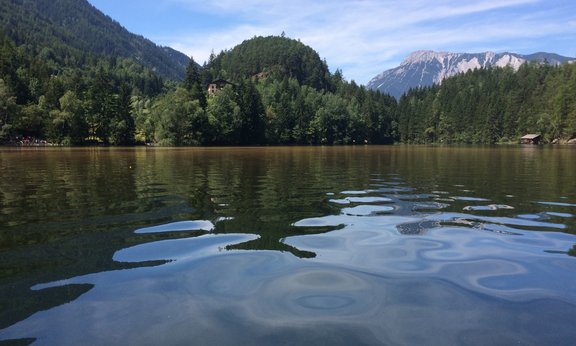More than 32 million temperature data, collected in 139 lakes over a period of more than 30 years, now provide insights into the profound changes in lakes. It is not only the temperature that has increased due to climate change. This is also accompanied by significant changes in the habitats for many organisms, such as fish, zooplankton but also primary producers, in lakes. "At the moment, we expect a redistribution of habitats on Earth. For the first time, we have been able to show that habitats for species will change drastically not only on land, but also in lakes," explains Ruben Sommaruga. Due to climate warming, the temperature in lakes is also changing. Species that depend on certain temperatures or, for example, a certain oxygen content, will try to migrate to other depths and areas of the lake to find a new habitat there. Whether they will be able to settle there, however, remains an open question. "In other regions in the lake, there are already native species there with which the newcomers have to compete. Especially invasive species, generalists that can adapt well to new conditions, will probably be able to spread further and continue to displace weaker species. It is to be expected that many, especially endemic species, will not survive," says the ecologist. Scientists from all over the world have jointly developed a model to calculate changes in thermal habitat and forecast biodiversity trends. "Lakes in the tropics are even more affected by species extinction and changes in biodiversity than lakes at higher latitudes. However, changes will occur everywhere," Sommaruga clarifies. With their research, the scientists want to help understand the changes in habitats, calculate them and thus help to develop measures to protect species and biodiversity.
Complex modelling
For their calculations, the scientists draw on temperature data in 139 lakes in the years from 1978 to 1995 and in the period from 1996 to 2013. They thus have records from two periods that were influenced differently by climate warming. Not only temperature, but also other factors play a significant role in the change of habitat conditions in the lake. The oxygen content or competition with others also causes species to change their habitat. "With our research, we have succeeded for the first time in calculating the changes in habitats. If we compare the loss of biodiversity in marine and terrestrial areas with that in freshwaters, the latter is where it is highest," says Sommaruga. The researchers also note differences above all between lakes at different latitudes. Habitats in tropical lakes are particularly affected by the changes. Here, so-called the lack of seasonality additionally influences the climate-induced temperature changes. "The temperatures in the different water layers of a lake vary much more during the year in lakes at higher latitudes than in the tropics. Lakes in our region are subject to a clearly defined seasonality and normally mix completely every year in spring and autumn. This changes the temperature, oxygen and nutrients in the lake, which gives species the opportunity to find other environmental conditions that are not so dependent on climate change," explains the ecologist. Lakes in the tropics, on the other hand, always have a less variable temperature and mix usually on a daily basis Thus, the chance for certain species of finding new thermal habitats is therefore lower. The international team of scientists has developed a model that can be used to calculate the changes in lakes. This gives experts worldwide the opportunity to react to the predicted changes in lakes in order to protect biodiversity.

